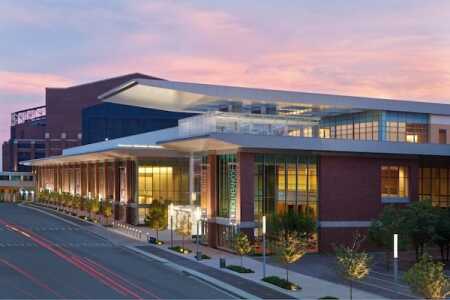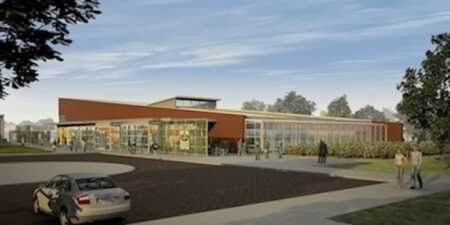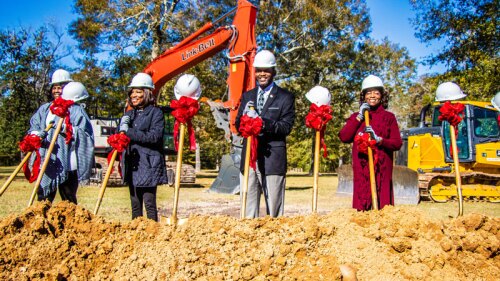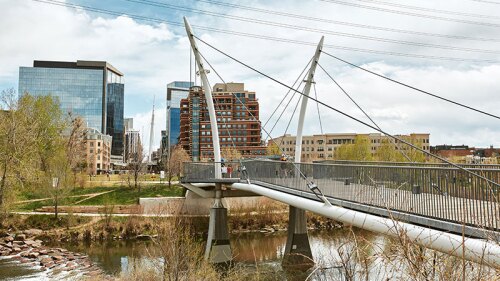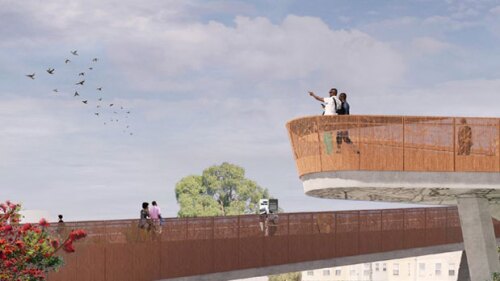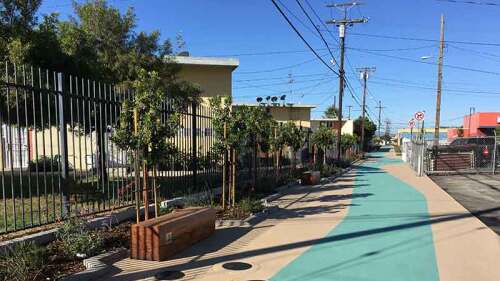Every city that hosts a Super Bowl gets a kind of thank-you gift from the NFL: a million-dollar matching investment for a youth education center in a disadvantaged part of town. The idea, on the NFL’s part, is to give hosting cities some permanent legacy after the big, expensive party is over. And outside of the big, expensive stadium that hosts the game – many of which are built these days with Super Bowl bids in mind – this may be one of the few tangible things a city gets for all its hospitality.
Indianapolis, host of Sunday’s game, has gone a slightly different route.
“I’m never trying to be disparaging to these other communities in any way,” says Bill Browne, a local architect on Indianapolis’ host committee who has looked at what other Super Bowl cities have done. “But we came away with the sense that they’re putting on an event. We’re certainly putting on an event here, but we are absolutely trying to transform a number of elements of our community as a part of this.”
Thanks at least in part to the Super Bowl, people in Indianapolis will wake up to the football off-season next week with a newly expanded convention center, a new central civic space, a newly revitalized low-income neighborhood, even a new downtown skyline. The Super Bowl, in short, has done more to catalyze change in Indianapolis than it does in most cities – and all of this has taken place over the course of a recession.
“There is nothing like a great sporting event or a tragedy – those are the two things we see bringing people together,” says architect Jim Schellinger. “And one of those is not very pleasant.”
Schellinger’s firm, CSO Architects, worked on what’s now the world’s largest JW Marriott, a 34-story, thousand-room hotel in curving, reflective blue glass that was designed by HOK. With it, downtown Indianapolis now looks like this:
The hotel, which was finished early last year, will support the convention center which has now doubled in size, giving Indianapolis what local officials hope will be a chance to compete with more expensive convention hubs on the East and West coasts. Browne’s firm, RATIO Architects, led the makeover of the convention center, which now also connects underground to Lucas Oil Stadium, where Sunday’s game will be played.
Previously, a truncated, three-block, four-lane road connected the convention center to what’s now called Bankers Life Fieldhouse, the home of the Indiana Pacers. Georgia Street was broken off from the surrounding street grid by these two massive attractions, but it did little to draw people between them. The city designated the spot to host the Super Bowl Village, the fan festival that accompanies the game. But in the planning for that temporary event, Browne and the others involved began to reimagine the space as a permanent home for the city’s outdoor events.
Georgia Street was redesigned by RATIO as a shared space, with just one lane of traffic in each direction and no designated curbs to facilitate easy conversion into what Browne describes as “a more appropriate version of Bourbon Street.”
“I would describe it as a pedestrian mall area that allows vehicle traffic to pass through it, versus a street that allows pedestrians to cross,” Schellinger says. “It’s going to be something that we’re not accustomed to here. We don’t have anything like that.”
The other changes in town have taken place farther from the main Super Bowl attractions. Indianapolis took that million-dollar Youth Education Town investment from the NFL and used it to help leverage the revitalization of the entire Near Eastside neighborhood.
In all, nearly $150 million is being invested into the area, a high-crime, high-foreclosure community marked by cottage-style worker homes for residents who would have in the past gone to factory jobs that no longer exist.
Through a combination of private investment and grant money, the city is building or remodeling low-income and affordable housing here, doing a streetscape improvement project along a mile of the main commercial street, and constructing the $10 million Chase Near Eastside Legacy Center. This is the outgrowth of that original Youth Education Town:
The NFL normally expects cities to break ground on the facility in conjunction with the Super Bowl. But Indianapolis’ project, also designed by RATIO, is already completed.
“The investment, getting up to this $150 million, I would say that at least $100 million if not more of it is due to the Super Bowl, making that kind of commitment to this area,” Browne says. “That money could have been raised but it might have taken 10 years to accomplish that.”
Reprinted with permission from The Atlantic Cities. Copyright 2012 by The Atlantic Monthly Group.


